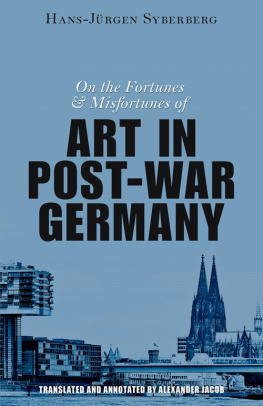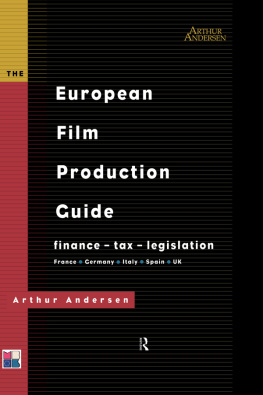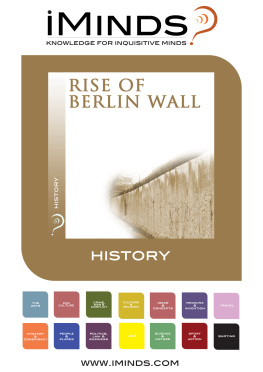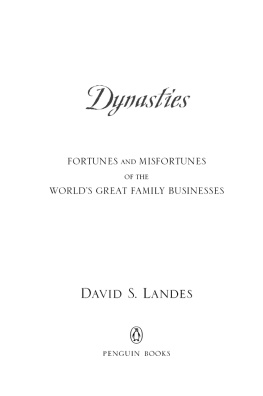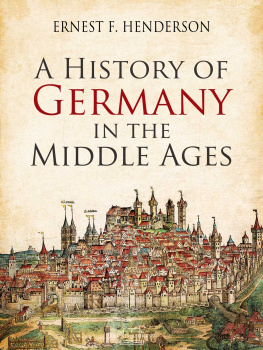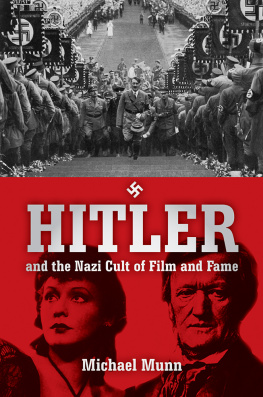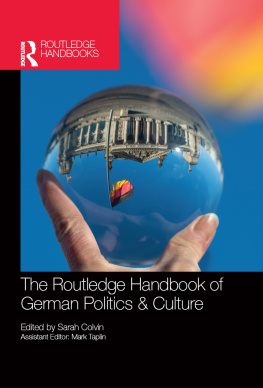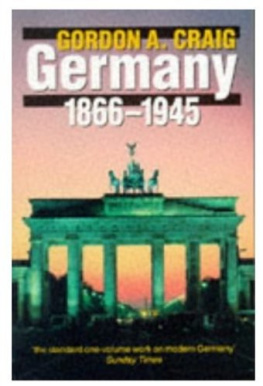Hans-Jrgen Syberberg
On the Fortunes & Misfortunes of
Art in Post-War Germany
Translated and Annotated by Alexander Jacob
Arktos
London 2017
Copyright 2017 by Arktos Media Ltd.
All rights reserved. No part of this book may be reproduced or utilized in any form or by any means (whether electronic or mechanical), including photocopying, recording or by any information storage and retrieval system, without permission in writing from the publisher.
Arktos.com | Facebook | Twitter | Instagram
Original German Edition: Vom Unglck und Glck der Kunst in Deutschland nach dem letzten Kriege (Mnchen: Matthes und Seitz, 1990).
ISBN
978-1-912079-79-7 (Softcover)
978-1-912079-78-0 (Ebook)
Editing
David Yorkshire
John Bruce Leonard
Cover and Layout
Tor Westman
Hans-Jrgen Syberberg
Hans-Jrgen Syberberg was born in 1935 in Nossendorf in Pomerania to a Prussian ruling class family. He lived in Rostock and Berlin until 1945 and moved in 1953 to West Germany, where he did his doctorate on Drrenmatt at the University of Munich. Influenced by Brechts anti-realistic epic theatre, Syberberg began producing documentary films in 1963, but did not achieve international fame until his film on the Bavarian king Ludwig II: Requiem fr einen jungfrulichen Knig (1972), which combined Brechtian dramatic tableaux with a soundtrack of Wagnerian music to great evocative effect. This was followed by Karl May in 1974 about the romantic German novelist who wrote of adventures among exotic peoples like the Indians of America and the Turks of the Ottoman Empire, and whose novels were admired by Hitler. In the following year Syberberg filmed a long interview with Winifred Wagner called Winifred Wagner und die Geschichte des Hauses Wahnfried von 19141975 . His next film was on Hitler himself and was called Hitler. Ein Film aus Deutschland . This was followed by a filmed version of Wagners Parsifal in 1981. His final films were filmed versions of monologue dramas featuring Edith Clever, such as Die Nacht (1984), Heinrich von Kleists Penthesilea (1987) and Die Marquise von O (1989), Ein Traum, was sonst? (1994) which evoked the end of the Bismarckian Reich, and a two-part film called Hhle der Erinnerung (1997).
Apart from directing films, Syberberg has also published books about film-making and social and cultural history starting with Syberbergs Filmbuch in 1976, Die freudlose Gesellschaft. Notizen aus dem letzten Jahr (1981), Der Wald steht schwarz und schweiget (1984), the present work in 1990 and Der verlorene Auftragein Essay (1994). Perhaps the most important of these is the present work, and it has also been one of the most controversial.
In February 2011 Syberberg was awarded the highest honor of the French Ministry of Culture when he was made Commandeur de lOrdre des Arts et des Lettres.
Preface to the English Edition
When this book was published twenty years ago, people spoke of it as a Depot-Buch, that is, a book that would lie for a long while and wait for its time.
People said, for sixty years. And then the authors daughter would finally be proud of what he had written. It was a document of German history forty-five years after the war. And it describes the situation of the intellectual climate in the Federal Republic at the moment when the wall between the East and the West fell. When in East Germany a balance was established after the domination of the Russians over East Germany, it was an attempt to test the intellectual freedom also in the Western part. The leaders of opinion in the West, the generation of 68 and their media, were outraged.
And they took revenge. People spoke of the author as a dead man as far as public life was concerned, wherever art was concerned he need not look for anything more ( FA Z /Spiegel ), they demanded that he be deprived of all microphones, police were posted in front of lecture halls to provide security against assaults (Kunsthalle, Dsseldorf), the theater performances were empty (Berlin) or were besieged by demonstrators with flyers (Hannover), he was advised to avoid the public for ten years, friendships were terminated in public newspaper campaigns. Answers in the form of letters to the editor were not printed unless he recanted. This was a test of all that they had learnt of freedom of opinion and of freedom of art in theater, film, books or in television, newpapers, radio.
Something had happened, that is, something had been written. Finally, they had him in black and white: the man who had for years been making different films, wanted another theater, with a reduction of the control of the producers, and who wrote against those who criticized or conformed ideologically. He complained and said publicly what one did not read, see or hear anywhere, what was previously hard to understand in films, theater and books. Now it was published and it sought to name the reasons why his images, music, movements and thoughts were always different. Suspicious. What was respected or lauded and acclaimed in Paris, London, New York, Madrid and Lisbon, and even in Israel, and, soon, also in Moscow, was deemed suspect in Germany. The important personalities of the culture pages of all West German newspapers failed in the test case of German unity when they, through the years, agreed to the division as the peaceful border of the East and called those who wanted unity reactionaries. And it was their criterion for all judgments without aesthetics, which, following the so-called Frankfurt School, they defined as a Fascist conception.
What was sold in 1990 under the counter as the poison of a disrespectable and marginalized person and became the secret samizdat etc., as the cause of the ensuing aberrations up until present-day Bayreuth. In this way the German art business had become the model student of international developments, but neglecting, as it was maintained here, its own possibilities of developing directly from the history of that which was its own.
That was twenty years ago. Today there has been printed as worth reading ( Die Welt 24.9.2010, Stephan Wackwitz explores a sacred legend) a considerable critique of W. Benjamin, plans). But the cards have also recently been reshuffled. The position of art in Germany after 45 and within the international network, and the question of the present-day priorities, are interesting. The longing of one who fled from Germany in 1933 to be back in the place of his origin is touching. Perhaps that is what remains. This arose in spite of everything, wrested from the developments described above. What is bad is what was hindered, interesting the in spite of as a form.
The emigrants often mentioned as adversaries in Germany were personally often allies (among the foreign voices in Germany, Hans Mayer one had to seek another art on the basis of a common life.
In this example it is interesting how the creative forces nevertheless survive. And only that which arose from it matters. It is not the victory over the opponents that is important but to win them. But what up to the Hitler film sought new forms following the schools of the age had thereafter to be continued in the monologue, in the theater as well as in film, even without these schools, now freed, alone and solitary.
This book was written and published twenty years ago. As a historical reckoning of the intellectual life in West Germany during the fall of the wall in Europe, and from the perspective of one participating in the core of things. Since that time the author has been living in the eastern part of the reunited country, in the house where he was born, that was once part of his fathers property. (up to 6,000 visitors daily), or on the land itself, are the continuation of film, theater and literature by other means.
This book is to be understood as a record, a stock-taking of the false conduct of intellectuals, and of art, in Germany after the war, from the point of view of the generation of the author, one of them, written 20 years ago, and still to be noted. And it is an example of his resistance regarding what was to be done and, after this self-assertion, of his search for a way into the center of things, to shape them with this awareness into ever newer forms.
Next page
